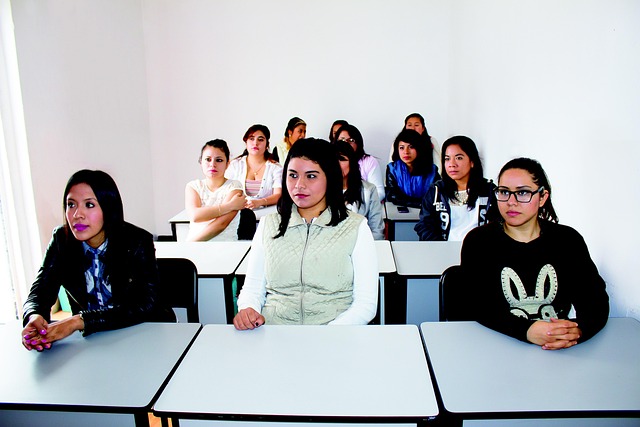How prior healthcare experience can reduce time to practical nursing qualification
Prior roles in healthcare—such as personal support work or care aide positions—often provide practical skills and workplace experience that align with practical nursing outcomes. This article explains how to document experience for bridging, pursue credit transfer, manage clinical placement and exam prep, and use continuing education to shorten the route to a practical nursing qualification.

Many experienced healthcare workers wonder whether the hands-on skills they use daily can speed their path to a practical nursing credential. Practical experience often covers core competencies such as basic patient care, infection control, communication, and routine clinical tasks. When properly documented and evaluated, these competencies may reduce duplicated learning in nursing programs, allow for targeted skills refreshers rather than full introductory courses, and streamline clinical placement or exam preparation timelines.
How does nursing or care aide experience help?
Work as a care aide, personal support worker, or similar role exposes candidates to direct patient care situations that map closely to practical nursing outcomes. Admissions teams and faculty commonly value documented clinical hours, supervisor assessments, and competency checklists when assessing readiness for nursing coursework. Demonstrated proficiency in vital signs, mobility assistance, hygiene care, and basic observations can translate into reduced repetition of fundamental skills training. Clear documentation—shift logs, references, and formal evaluations—strengthens requests for advanced standing or condensed skills sessions.
What bridging and credit transfer options exist?
Many educational institutions provide bridging pathways to recognize relevant prior learning. Credit transfer policies differ by school and region, and typically require evidence such as transcripts, competency assessments, or verified clinical hour records. Outcomes can include exemption from specific theory modules, a shortened schedule of lab sessions, or reduced elective requirements. Prospective students should request a prior learning assessment early, prepare a detailed portfolio, and consult program advisors to understand which credits or exemptions are possible within the practical nurse curriculum.
How can clinical placement and exam prep shorten timelines?
Clinical placement is where prior experience most commonly reduces program duration. If an applicant proves competence in core bedside skills and clinical judgment, schools may tailor placement objectives or reduce supervised hours while still ensuring competency. Similarly, exam prep can be more focused: experienced candidates often concentrate on nursing-specific knowledge areas like pharmacology, charting standards, and scenario-based thinking rather than basic procedural practice. Programs, however, retain minimum competency standards to protect patient safety, so prior experience rarely eliminates the need for any placement or exam preparation.
How do licensing requirements affect completion time?
Regulatory and licensing bodies set minimum competency and exam requirements that programs must meet, which influences how much prior experience can shorten training. Even where institutions grant credit transfer, graduates almost always must pass required licensing or registration exams and meet jurisdictional practice requirements. Some regions permit a reduced educational load while still requiring full licensure exams; others have stricter mappings. Understanding the local licensing board’s expectations early helps applicants avoid surprises and plan the most efficient route to registration.
How can financial aid and time management support progress?
Accelerated pathways can reduce the total cost and time away from work, but bridging assessments and targeted courses still carry fees. Financial aid options—scholarships, government grants, employer-sponsored training, and flexible payment plans—can ease the transition. Effective time management is equally important: block study sessions, negotiate flexible shifts with current employers, and prioritize clinical hours that align with program timelines. Combining financial planning with disciplined scheduling helps many learners complete requirements without prolonging program duration.
How to pursue continuing education and skills development?
Continuing education and intentional skills development strengthen prior learning claims and prepare candidates for advanced standing. Maintain a skills portfolio with documented competencies, supervisor evaluations, and certificates from accredited short courses (for example, medication administration refreshers, wound care, or clinical documentation workshops). These artifacts support prior learning assessments and demonstrate alignment with program learning outcomes. Connecting with program advisors and career services can reveal the most relevant continuing education options to bridge gaps between workplace practice and academic expectations.
| Provider Name | Services Offered | Key Features/Benefits |
|---|---|---|
| George Brown College (Toronto, Canada) | Practical Nursing programs and prior learning assessment | Structured assessments for prior learning, clinical placement network |
| Humber College (Toronto, Canada) | Practical Nursing diploma and bridging support | Skills labs, employer partnerships for placements, targeted bridging modules |
| Conestoga College (Kitchener, Canada) | Practical Nursing program with flexible delivery | Competency-based assessments, regional clinical partners |
| Seneca College (Toronto, Canada) | Practical Nursing diploma and student supports | Clinical simulation resources, credit evaluation services |
| Ivy Tech Community College (Indiana, USA) | Practical Nursing/LPN programs and competency testing | Community-based placements, practical skills focus |
These providers illustrate institutions that commonly offer practical nursing education and processes to evaluate prior learning; availability of specific bridging pathways varies by campus and over time. Contact each provider directly for current program details.
Conclusion Prior healthcare experience can meaningfully reduce time to a practical nursing qualification by supporting credit transfer, focused clinical placements, and more efficient exam preparation, but the extent of acceleration depends on institutional policies and regulatory requirements. Preparing a concise skills portfolio, engaging with admissions and licensing bodies early, and pursuing targeted continuing education improve the likelihood of a faster and smoother transition to practical nursing.





